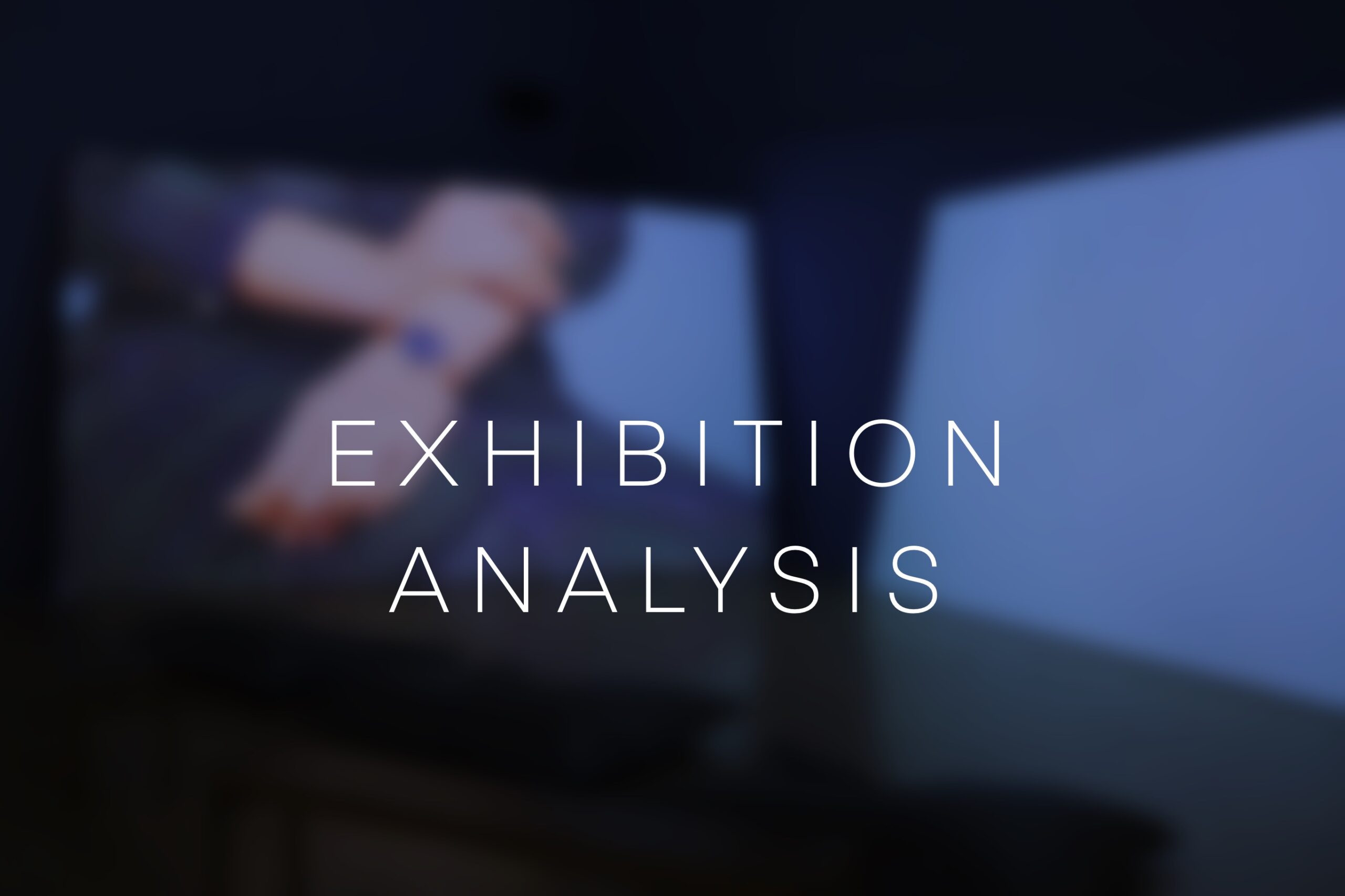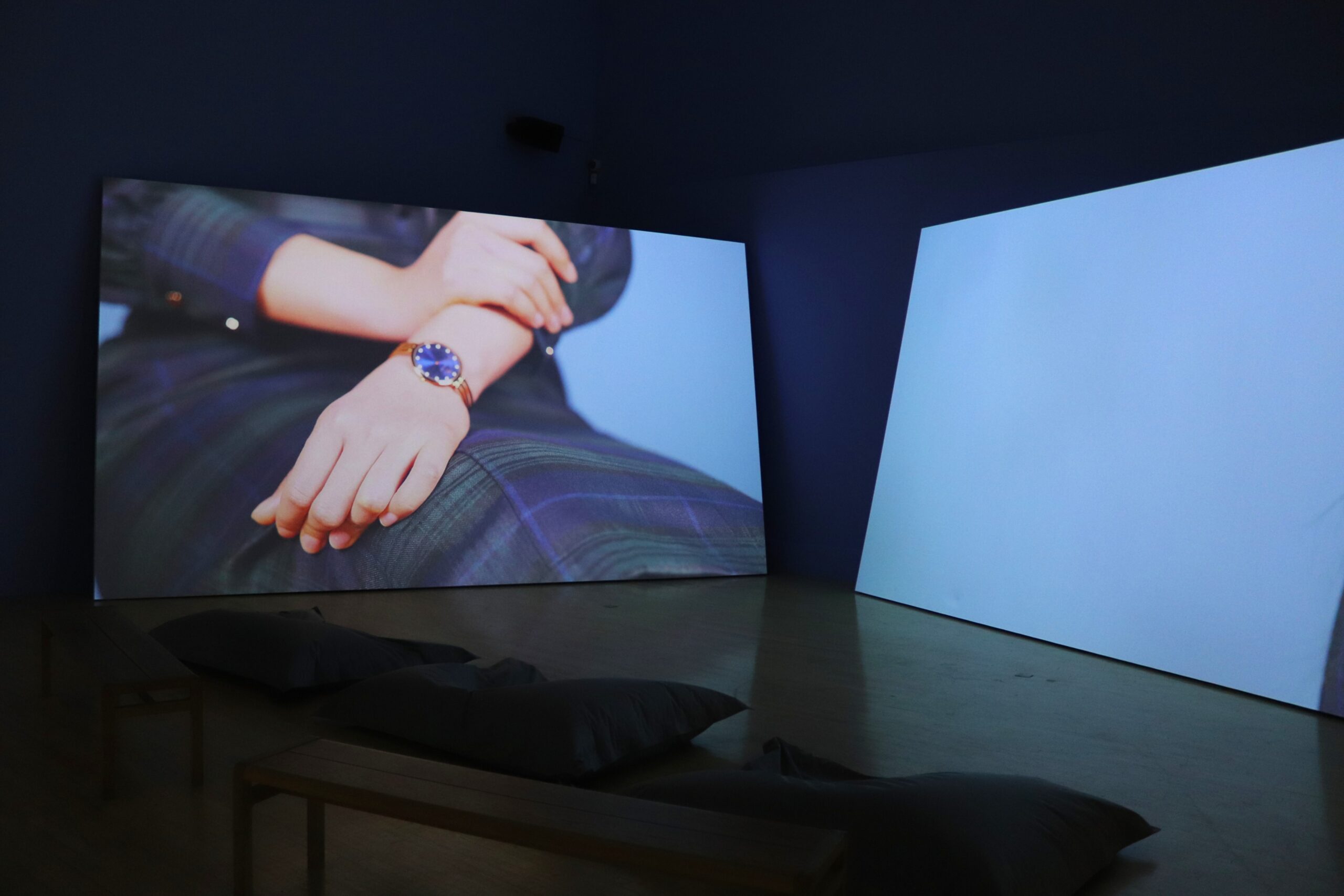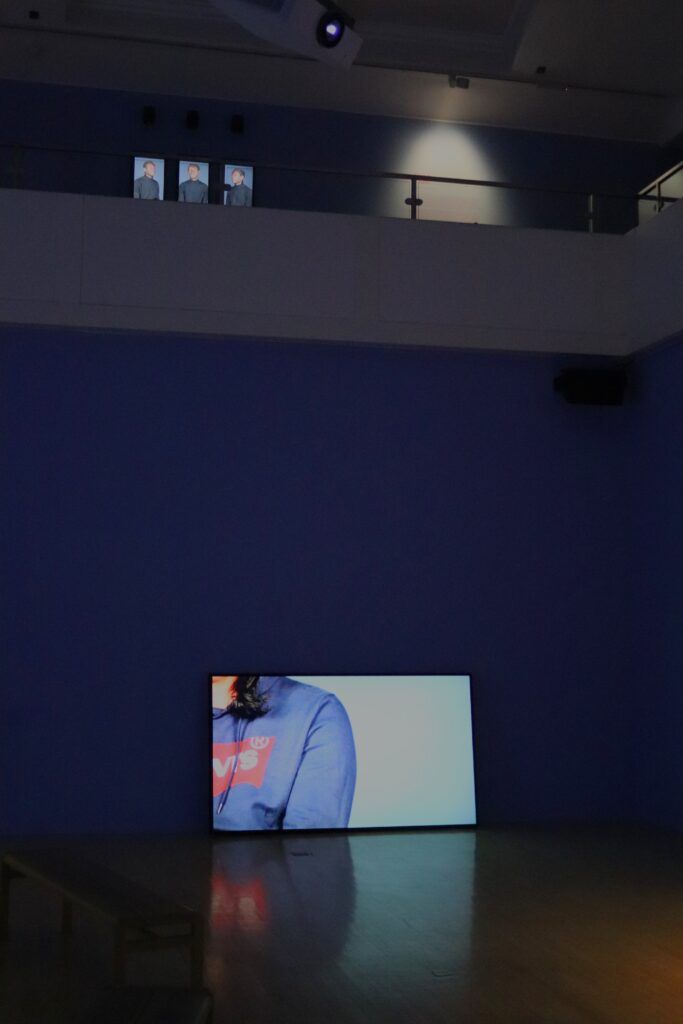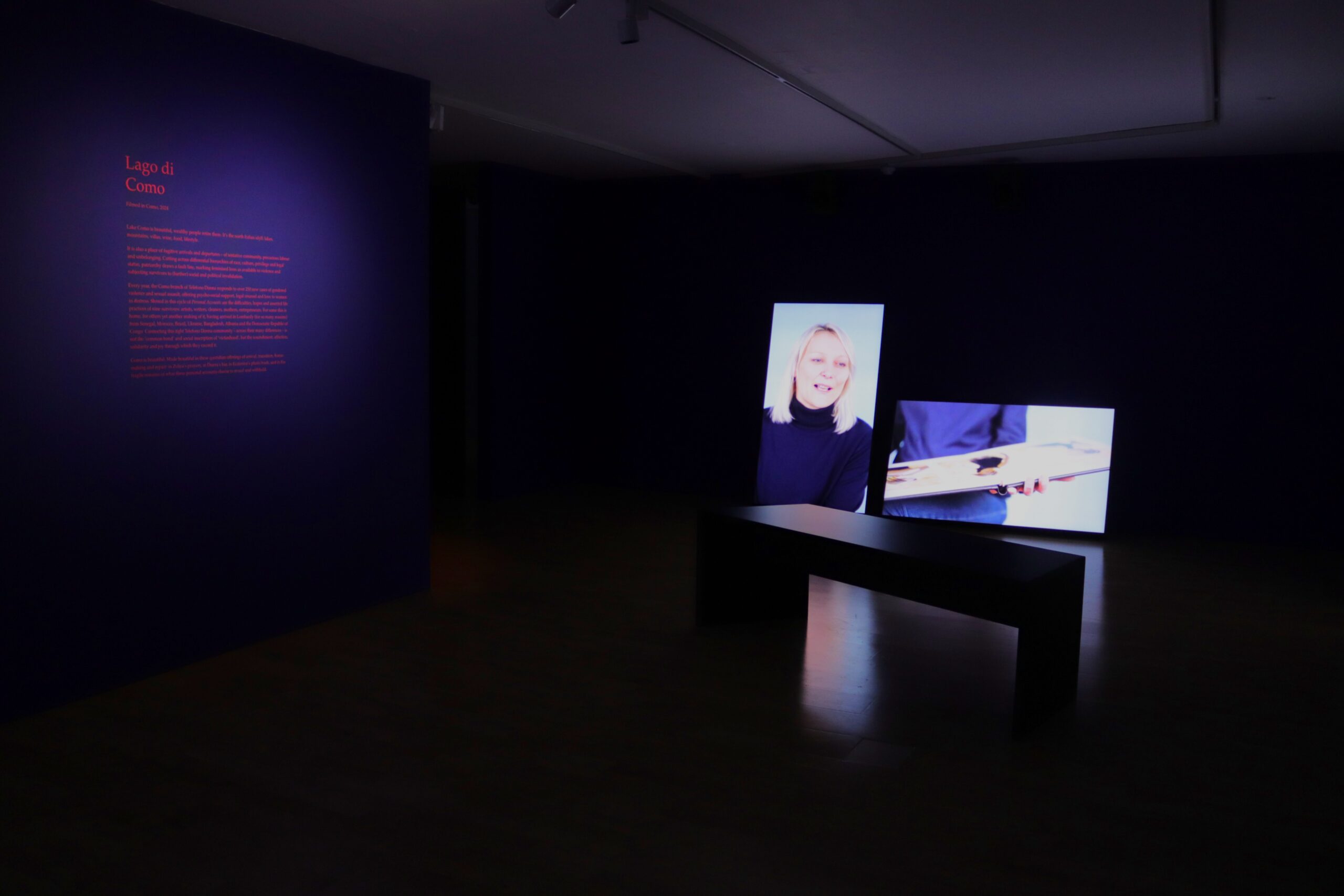Week 2 – Curatorial Analysis: Personal Accounts Talbot Rice Gallery Exhibition Analysis

Introduction.
Introduced in Talbot Rice Gallery’s White Gallery, Gabrielle Goliath exhibits the Edinburgh cycle of her exhibition Personal Accounts. Having visited this space on Thursday the 23rd of January, I produced field notes purposely devoid of external information. As a result, my analysis consists of an investigation into the correlation between curatorial decision and the artists intention, supplemented with initial field note reactions.

Personal Accounts, Room 1. Mango Blossoms, Talbot Tice Gallery, Taken by Harry Mayston 23/01/25
Initial Impressions
Found in both online and physical exhibition information, Personal Accounts is described as a ‘transnational, decolonial, black feminist project of repair’, focusing on the survival of Black, Brown, Indigenous, Femme, Queer, Non-Binary, and Trans individuals in the face of social and patriarchal violence. The decoloniality is evident in the immediate curatorial display method. On entering the White Gallery (the first room) the two largest screens are at angles disjointed from the walls, creating a more enclosed space, where the viewer is invited to sit on benches or beanbags. In my field notes I found the use of beanbags particularly interesting. It invites the audience to sit and relax, setting this space apart from the formal setting that the western gallery is typically associated with. Additionally, it directs perception away from the themes of violence implied by a survival focused narrative, instead, framing the exhibition as a ‘gesture of care’, as written in gallery leaflets. This is reinforced by a variety of other display decisions, namely the wall colours, and the elevation of the remaining screens in the subsequent exhibition spaces. Starting with the former, the walls are painted blue. In my field notes I noted this down as ‘a step away from the colonial white cube standard associated with modern and contemporary art exhibitions’ but also questioned the purpose, ‘does this invoke a sense of calm or melancholy?’. In the context of this exhibition I believe that both are possible but it also has practical solutions in reducing space brightness and increasing screen visibility. Secondly, all but three of the screens were installed at ground level, defying traditional technical installation it encourages the viewer to sit on the provided seating, creating both a physical and emotional closeness to the individuals featured in the videos.

Personal Accounts Room 1. Mango Blossoms, Talbot Tice Gallery, Taken by Harry Mayston 23/01/25.
Application of Theory.
The decision for Talbot Rice Gallery to feature this exhibition is emblematic of the contemporary movement to participatory curation, as well as the evolving role of video art in the Contemporary Art Sphere. The evolvement of curation has been described by Terry Smith, a professor at the University of Pittsburgh. He stated that there has been a curatorial movement toward a practice that is concerned with the ways that an audience engages with exhibition pieces and gallery spaces. This is corroborated by the introductory statement by Gallery Director, Tessa Giblin:
“Finding a way forward… Radiate[s] within these rooms of Talbot Rice gallery, but they echo and reverberate through homes, student accommodation, workplaces, refuges, places of authority… across the generations and carried for others”
Giblin’s thinking here is clearly audience focused, imagining the ways that gallery attendees may interact with the work and bring it forth past the end of the exhibition. Similarly to this curatorial progression, the emergence of video art has also developed over the same period of approximately the 1970s to the present. Vuk Vukovic, also from the University of Pittsburgh, establishes video art as an intensely participatory form where the audience is essential to the medium. Vukovic, responds to Rosalind Krauss’s assertion that video pieces are psychological features of narcissism, by iterating David Joselit’s statement that video engages in the “participatory act of the artist reaching out to their audience though the video monitor”. Lastly, in the progression of video as a medium, the conflation of this form of art, and the discipline of film can be easily combined, reported as the tendency for contemporary art galleries to adhere to the traditional forms of display associated with cinema, such as screens being placed against walls, or the dimming of lights within the space. This can be observed to occur within Personal Accounts. The dark space, along with the comfortable seating, and multidirectional sound display all contribute to a cinematic display, however, this does also make the space feel more ‘personal and intimate’ as described in my field notes.

Personal Accounts Room 3. Lago Di Como, Talbot Tice Gallery, Taken by Harry Mayston 23/01/25
Conclusion.
The curatorial decisions that have been demonstrated throughout this exhibition directly echo the sentiments of the individual pieces, and the artist’s intention. Additionally, decolonising this space, moving away from the standards that have been imposed upon large scale art museums and galleries, opens the possibility of space to diversify the gallery display to not only harmonise, but enhance the viewing experience to the audience. Further, as the role of the audience has become more prevalent in curatorial discourse, it has become clear that some artistic mediums are better suited to contemporary curatorial practice. Video has the capacity to align with the values of the contemporary curator, but also as a relatively new artistic medium, does not have the history of ridged conventions that have to be usurped to synthesize into the contemporary art world. Talbot Rice has engaged, with what has previously been a contentious conflation with film elements to direct the audience experience toward the artist’s intention, and carefully navigate away from the themes that the artist purposefully omits.



